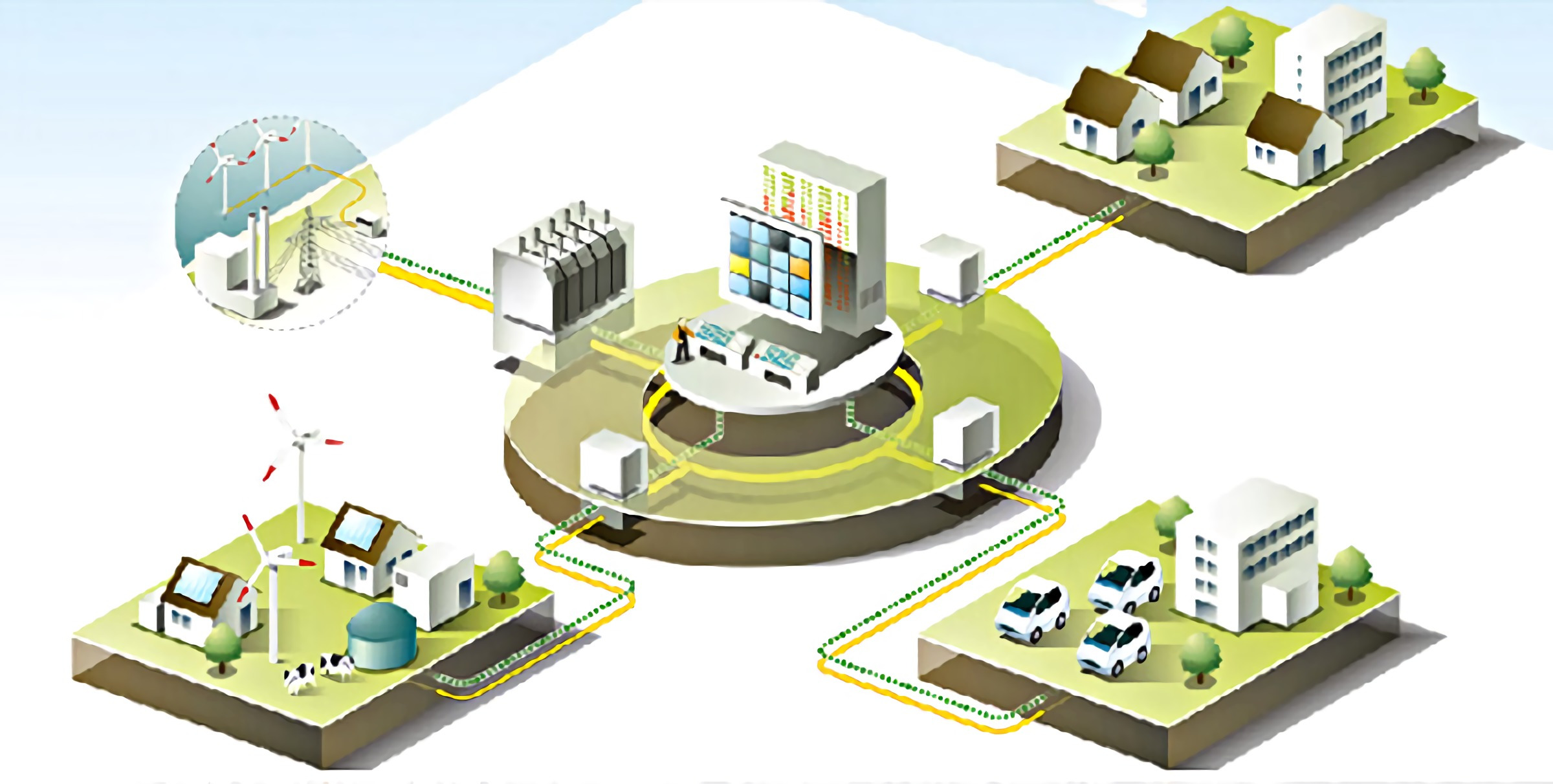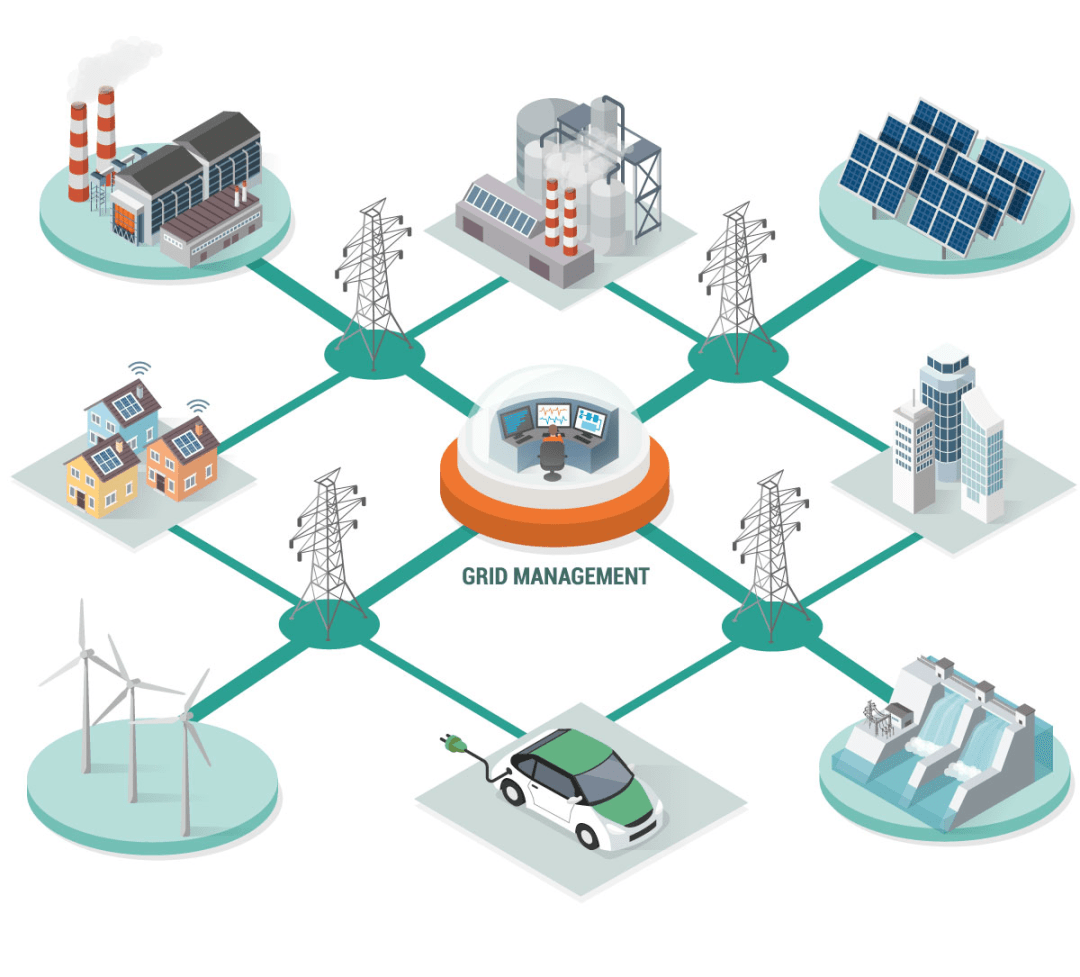Microgrid Control System: Revolutionizing Energy Management
In the evolving field of energy management microgrid control systems have emerged as a groundbreaking technology that is reshaping how we produce, distribute and consume electricity. With the pressing challenges of climate change and the demand, for energy solutions microgrid control systems have gained recognition for their potential to enhance energy efficiency bolster resilience. Facilitate the integration of renewable energy sources. This article delves into the workings of microgrid control systems their significance in todays energy landscape and the promise they hold for a greener and more sustainable future.
What is Microgrid Control Systems
A microgrid refers to a localized energy system that can operate independently or in conjunction with the power grid. Unlike grids microgrids are decentralized networks comprising various distributed energy resources (DERs) such as solar panels, wind turbines, energy storage systems and even small scale generators. What sets microgrids apart is their control system that seamlessly integrates and manages these energy sources.
Key Components and Functionality
Renewable Energy Sources; Microgrids harness sustainable power from sources like solar and wind to generate electricity. These sources play a role, in reducing greenhouse gas emissions.
Energy Storage Systems; Batteries and other technologies, for storing energy play a role in controlling microgrids. They store surplus energy generated during peak production periods, which can then be used during high demand periods or when renewable sources are not producing electricity.
Smart Inverters and Converters; components known as inverters and converters ensure compatibility between various energy sources and the microgrid. They convert the current (DC) generated by panels into alternating current (AC) making it suitable for household or industrial use.
Microgrid Controller; The controller serves as the brain of the microgrid constantly monitoring the supply and demand of energy in time. Through algorithms it optimizes the distribution of electricity seamlessly switching between grid connected and isolated modes when to ensure a stable and reliable power supply.
Load Management Systems; These systems efficiently balance energy demand by managing loads. They prioritize loads ensuring that essential services can continue functioning during power outages.

Benefits of Microgrid Control Systems
Enhanced Energy Resilience; Microgrids enhance grid resilience by isolating themselves during outages guaranteeing a power supply to facilities such, as hospitals, emergency services and communication networks.
Reduced Carbon Emissions; By integrating energy sources microgrids decrease dependence on fuels thereby mitigating carbon emissions and contributing to efforts to combat climate change.
Microgrids offer cost savings, for both consumers and businesses by optimizing energy usage. By generating electricity they minimize transportation losses associated with long distance power transmission.
One of the benefits of microgrids is their promotion of economies. They encourage the development of scale energy projects fostering economic growth and creating job opportunities at the community level.
Microgrid control systems also play a role in supporting the grid during peak demand periods thus relieving stress and preventing blackouts. Additionally they contribute to load balancing by distributing electricity.
However despite their solutions, microgrid control systems face challenges. Initial setup costs, regulatory hurdles and technological limitations hinder adoption. Nevertheless ongoing advancements in energy storage grid management software and supportive policies are gradually overcoming these obstacles.

Challenges and Future Prospects
Looking ahead to the future of microgrid control systems there is promise. With the integration of intelligence and machine learning capabilities these systems are becoming more intelligent and adaptive. Predictive algorithms can anticipate energy demand patterns while optimizing storage capacity for enhanced efficiency. Furthermore blockchain technology offers opportunities for transparent transactions within microgrid communities enabling a peer, to peer energy trading system.
Real Life Examples-Practical Applications
1. Brooklyn Microgrid Project, New York, USA
One of the most prominent examples of microgrid technology in action is the Brooklyn Microgrid project in New York City. In this innovative initiative, local residents and businesses have installed solar panels on their rooftops, generating clean energy. The surplus energy produced by these solar installations is fed back into the grid, creating a shared pool of renewable electricity.
Here’s how it works: Residents who generate excess energy can sell it directly to their neighbors via blockchain-based transactions. This peer-to-peer energy trading system is made possible through a sophisticated microgrid control system. Residents are no longer just consumers; they are prosumers—both producers and consumers of energy. This project not only promotes the use of renewable energy but also fosters a sense of community and local energy independence.
2. Rocky Mountain Institute’s (RMI) Electricity Innovation Lab (eLab), Colorado, USA
In rural Colorado, the Rocky Mountain Institute (RMI) has been working on implementing microgrid solutions in partnership with local communities. These areas often face challenges such as unreliable power supply and limited access to the main grid. Microgrid control systems have been deployed to enhance energy resilience and ensure continuous electricity supply, especially in times of natural disasters or grid failures.
RMI’s eLab has facilitated the development of microgrid projects that combine solar power with advanced battery storage systems. These microgrids are tailored to the specific needs of the communities they serve. For example, in remote villages, microgrids power essential facilities like schools, healthcare centers, and community centers. These projects not only improve the quality of life for residents but also serve as models for sustainable energy solutions in off-grid and underserved areas.
3. Tesla Powerpacks in Ta’u, American Samoa
American Samoa, a remote island in the Pacific Ocean, faced frequent power outages due to its reliance on imported diesel fuel for electricity generation. To address this issue and reduce the island’s carbon footprint, Tesla installed a microgrid system powered by solar energy and energy storage in the form of Tesla Powerpacks.
This microgrid project, funded by the American Samoa Economic Development Authority, has transformed the island's energy landscape. The microgrid control system ensures that the island’s electricity needs are met by harnessing energy from the sun during the day and storing excess energy in the Powerpacks for use during the night or on cloudy days. As a result, Ta’u now runs almost entirely on solar power, reducing its dependence on expensive and polluting diesel generators.
4. Kigali, Rwanda
Rwanda, like many other developing nations, faces challenges in providing reliable electricity to its citizens, especially in rural areas. To address this issue, Rwanda has invested in microgrid projects to extend the reach of electricity to remote communities.
In Kigali, the capital city, microgrid control systems have been implemented to integrate renewable energy sources, such as solar panels and small-scale hydropower, with energy storage solutions. These microgrids have enabled the electrification of schools, health clinics, and households that were previously without power. By providing a stable source of electricity, these microgrids have not only improved living standards but have also supported economic activities, education, and healthcare services in these communities.
In Conclusion
Microgrid control systems are at the forefront of the shift, towards energy. Their ability to incorporate energy sources enhance energy resilience and foster community empowerment renders them essential in our pursuit of a future. As technology advances and economies of scale reduce costs microgrid control systems will become more accessible completely transforming how we generate, distribute and consume electricity. Embracing this technology is not just an option but an imperative as we strive for an more resilient planet.


